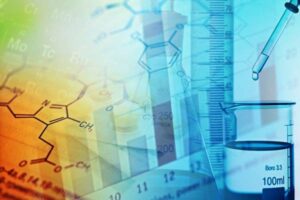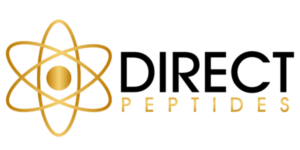
The Benefits Of Thymosin Alpha-1 In Treating Cystic Fibrosis
Thymosin Alpha-1 and Cystic Fibrosis (CF) are at the forefront of groundbreaking medical research. Recent Germany studies have shown that
As grow older, we might discover that the full, soft, voluminous hair we had once unappreciated in our more youthful days becomes brittle and thin. Hair grows under half an inch over a monthly period, so the hair on your head has been subjected to years of damages and sunlight exposure. It is also impacted by naturally decreasing hormones which has a part to play in hair growth, it’s greying and appearance. Androgenetic alopecia is one of the most typical hair loss in both males and females. Keep reading to find out what peptide PTD DBM Germany could do for you.
Alopecia, commonly referred to as hair loss or baldness, is the loss of hair from part of the head or body. It could have many causes including:
It can be temporary or permanent. When hair starts to grow thinner and has little elasticity as it also experiences slower growth rates than usual.
People usually lose a certain amount of hair daily, but it normally goes unnoticed since new hair always grows at the same time to replace the ones that have shed. Inherited hair loss is genetic, and hair may start shrivelling from adolescent years or adulthood. It is common to both genders. Ageing hair loss happens later in life with decreased hair growth due to the lack of formation of hair follicles. Another common cause of hair loss is alopecia aerate that may occur in any part of the body. With decreasing hair, bald spots can appear and some people experience itchiness in hair loss spots.
Scientifically, CXXC5 acting as a counter regulator on the Wnt/β-catenin nerve tract, is associated with hair regrowth and the healing of wounds, seems to be the catalyst of hair loss. CXXC5 creates a bond with the Dvl protein repressing regeneration of hair and development of follicles. To prevent CXXC5 from binding with the Dishevelled protein and interfering with hair regrowth, a team of scientists successfully created a new biocompatible substance called PTD-DBM.
The PTD-DBM peptide acts as a negative regulator of this process. When the interaction of CXXC5 and the Dishevelled protein is interrupted with the competing peptide, it activates the Wnt/β-catenin pathway and accelerates hair regrowth and wound-induced hair follicle neogenesis. For testing, bald mice had PTD-DBM applied to their bare skins for 28 days. The results showed it triggered the development of new follicles [1]. Discover PTD-DBM peptides from Direct Peptides.
PTD-DBM Germany is an acronym for Protein Transduction Domain-infused Dishevelled Binding Motif. It is a therapy for hair regrowth and re-formation of follicles to improve its elasticity. It’s an artificial peptide used for scalp treatment and it can be used as a topical application. It prevents the body enzymes and hormones from shrinking the hair follicles, which successively restores the follicles at the stem cell level—using PTD-DBM as treatment inhibits gradual decline of hair volume. It also boosts the formation of new cavities for hair regrowth.
Numerous Germany researchers believe that the development of hair follicles and regrowth of hair in people is the responsibility of Wnt signalling pathways inside the cell. They usually are made of proteins and relay significant cell activity and critical development signals all through the human body.
Androgenetic alopecia being the leading cause of hair loss led to tireless Germany research on ways to treat it. Topical PTD-DBM became the most viable treatment, and it has continued showing favourable outcomes. Androgenetic alopecia causes hair follicles to shrink. Using PTD-DBM Germany alone or together with local valproic acid prevents the chemical pathway causing the hair shrinkage from thriving. Within the first six to twelve weeks of medication, newer and healthier hair follicles begin to grow. The most significant advantage of PTD-DBM over other hair loss therapies is the absence of hair loss or shedding once you stop using the treatment. The new hair growth remains constant, which evokes positive remarks from patients using the treatment.
The treatment was developed by a researcher named Kang-Yeol Choi, with assistance from a group of scientists. The team found a protein, CXXC5 that counter regulated the communication nerve tracts of Wnt. These pathways are in a cell that is associated with hair regrowth and re-formation of follicles in grownups. The researchers came up with a biocompatible substance, PTD-DBM, which was a solution to hair loss. It countered the process leading to hair loss negatively, creating positive results. After exhibiting constructive results on hair regrowth and development, scientists carried out further research on PTD-DBM. It aimed at creating an ideal treatment for hair regeneration.
Micro needling, medically known as wound-induced hair neogenesis is a treatment for androgenetic alopecia. It involves the use of a device called a derma roller which has multiple tiny sterilized needles. The device pricks the skin creating small wounds which induce the generation of healthy follicles. Micro needling, also known as collagen induction therapy, which makes your body create more collagen and elastin. This helps to heal the skin and treat different skin conditions.
Valproic acid is a common treatment for seizures, cognitive conditions like bipolar disorder and migraines. It is also an important ingredient in the effectiveness of PTD-DBM. Researchers found that Valproic acid can initiate the Wnt signalling pathway that successively causes healing of wounds [2].
In conclusion to yield the best results for your research, hair loss treatment should be a three pronged approach:
Choices like PTD-DBM offer hope to people suffering from or prone to baldness since the treatment of hair loss is usually frustrating.
[1] https://www.sciencedirect.com/ science/article/pii/S0022202X17 315555
[2] https://www.ncbi.nlm.nih.gov/ pmc/articles/PMC9954685/
ALL CONTENT AND PRODUCT INFORMATION AVAILABLE ON THIS WEBSITE IS FOR EDUCATIONAL PURPOSES ONLY.
DISCLAIMER: These products are intended solely as a research chemical only. This classification allows for their use only for research development and laboratory studies. The information available on our Germany Direct Peptides website: https://germany.direct-peptides.com is provided for educational purposes only. These products are not for human or animal use or consumption in any manner. Handling of these products should be limited to suitably qualified professionals. They are not to be classified as a drug, food, cosmetic, or medicinal product and must not be mislabelled or used as such.

Thymosin Alpha-1 and Cystic Fibrosis (CF) are at the forefront of groundbreaking medical research. Recent Germany studies have shown that

Exploring the Potential Benefits of Tesofensine Capsules Continued research into the potential benefits of Tesofensine could lead to groundbreaking advancements

GHK-Cu Capsules: Copper Peptides For Skin In an ever-evolving world of beauty standards, the quest for vibrant, healthy skin remains

Explore the anti-aging effects of Epithalon And Thymalin Stack The pursuit of longevity and delaying the signs of aging is

401 N. Mills Ave, Ste B, Orlando, FL 32803, United States
